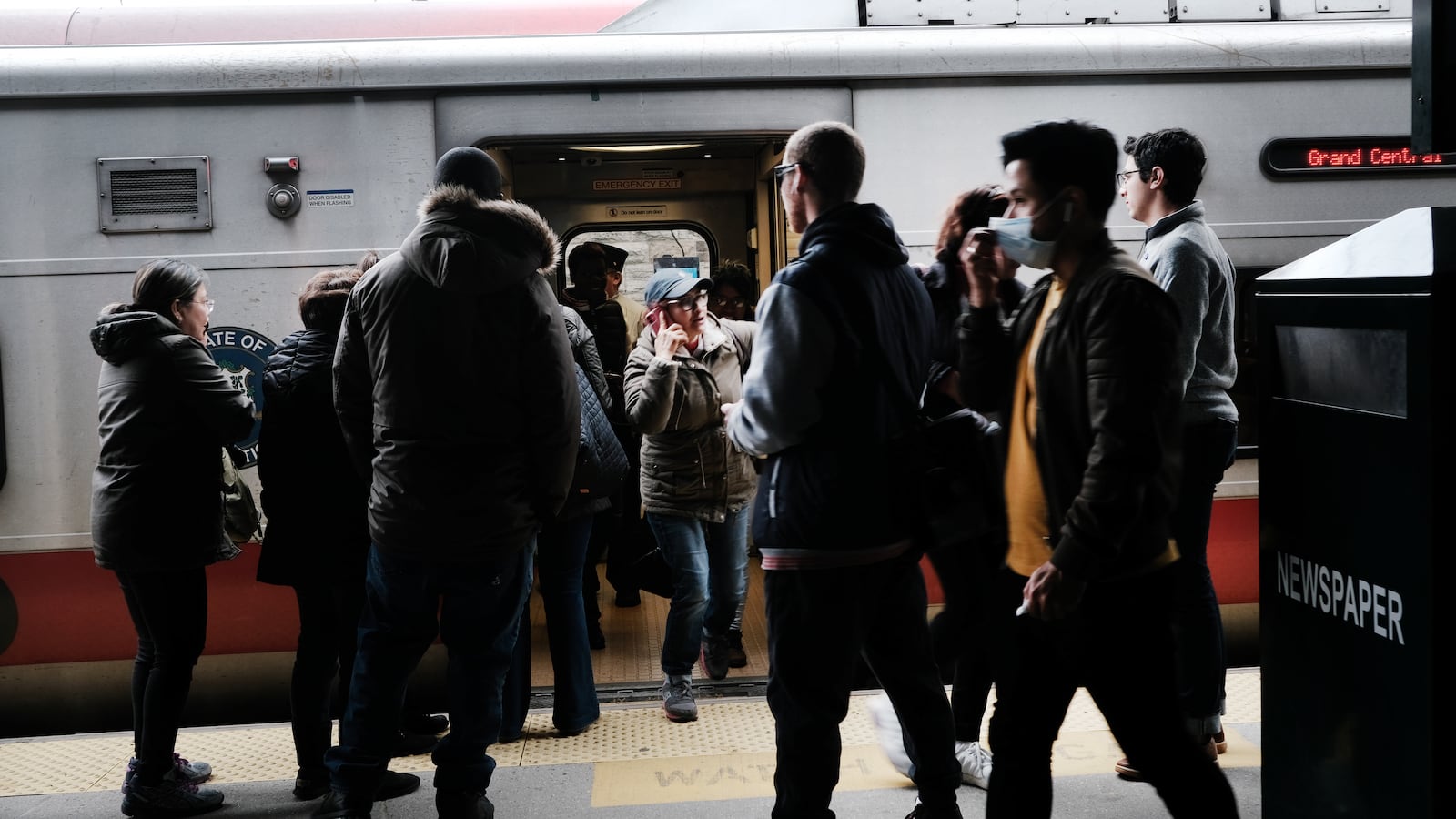Last week, Republican members of Congress heard a sober warning in a closed-door briefing on Capitol Hill: There’s a good chance most people in the United States will eventually be exposed to the novel coronavirus, according to one former official.
The assessment, from a former White House public-health official who now works in the pharmaceutical industry, did not suggest that most people will become infected or ill—rather, just that most will encounter the virus, which has killed at least 31 Americans and infected hundreds more.
Not all public-health experts share that view. And not everyone exposed to the virus will become infected. Still, the briefing highlighted the potential gravity of the growing crisis.
Two sources–a member of Congress who attended the briefing and a second person with knowledge of it–described the remarks, made last week, to The Daily Beast. They were delivered by Rajeev Venkayya, the president of the Global Vaccine Business Unit at Tokyo-based pharmaceutical giant Takeda. The member of Congress said the comment was “sobering,” while the second person noted it came during a discussion about how to manage the costs of medical care related to the coronavirus. Venkayya pointed out that widespread access to medical care will be vital, given the likely breadth of the exposure, that source said.
Venkayya confirmed to The Daily Beast through a spokesperson that he made the remark about the broad scope of likely exposure, and did not provide further comment on the briefing. He was previously director of vaccine delivery for the Bill & Melinda Gates Foundation’s Global Health Program, according to his bio on Takeda’s website. Before that, he worked in the George W. Bush White House as special assistant to the president for biodefense, where he led efforts to develop and implement the national strategy for pandemic influenza. (A Takeda spokesperson told The Daily Beast on Wednesday that the same group of executives also briefed Democrats.)
The remarks came in a briefing to House Republicans. Executives from multiple pharmaceutical companies spoke to the members, as did Vice President Mike Pence. The comment on most Americans’ likely potential exposure to the virus came after Pence left the briefing, the sources noted. Spokespersons for House Minority Leader Kevin McCarthy did not respond to requests for comment on this story. Neither did the Centers for Disease Control and Prevention (CDC).
The comment appeared to go further than the most recent public warnings from the CDC. Nancy Messonnier, director of the the National Center for Immunization and Respiratory Diseases at the CDC, said in a press call Monday that “as the trajectory of the outbreak continues, many people in the United States will at some point in time either this year or next be exposed to this virus and there’s a good chance many will become sick.”
In that call, Messonnier—who has not shied away from issuing dire warnings about the public health risks posed by the outbreak—took a comparatively reassuring tone.
“Right now in the United States, most communities, by far the vast majority of communities, are not having community transmission,” she said. “This is a time for people to prepare for what they might need to do, but not a time for people to clear out the shelves.”
In a statement to The Daily Beast, Venkayya gave more detail about his concerns regarding the spread of the virus, which appears to be particularly dangerous to the elderly.
“In my view, we have been past the point of containment since late January,” he said, noting Takeda asked its employees on Feb. 9 to cancel all non-essential international travel–more than a week before the first deaths in Iran and before news broke of the cluster of cases in Italy.
“We haven’t done a good job of explaining that case reports don’t reflect the global spread of the virus, because: (1) diagnostic testing hasn’t been widely available; and (2) clinicians and public health officials haven’t appreciated the speed and stealth of this outbreak,” he continued. “This has led to a dangerous sense of complacency in many places.”
“We can look at South Korea and Italy as possible glimpses into the future in parts of the U.S.,” he added. “Those are developed countries with well-functioning health systems, so there is no reason to believe this couldn’t happen here. We can’t expect everywhere to be like Singapore.”
Cases have boomed over the past few weeks in both South Korea and Italy, where more than 9,000 people had confirmed cases as of Tuesday evening and officials implemented an unprecedented lockdown. Singapore, meanwhile, has won praise from the head of the World Health Organization for its aggressive action to contain the virus. The city-state with a population of 5.6 million people has confirmed 166 cases as of March 10, according to The Straits Times, and no deaths.
Dr. Irwin Redlener, director of the National Center for Disaster Preparedness at Columbia University and an expert on U.S. readiness for pandemics, told The Daily Beast it was unlikely a significant majority of people in the United States would be exposed to the virus.
“Based on what we know now, it is not likely that 80 percent of Americans will be exposed,” he said, “though it is likely that 30 percent could be exposed.”
“We seem to have an overabundance of guesswork—not based on evidence or science—that has permeated the discussions about coronavirus, and this is a problem,” he cautioned. “It’s a problem that really began with our inability to get information that would have come from a robust testing program.”
He added that the disease was spreading very rapidly in the U.S., which could face a situation similar to that in Italy.
Dr. Timothy Brewer, a professor of epidemiology and medicine at UCLA who has served as an adviser for the World Health Organization, CDC, and National Institutes of Health, questioned how health authorities could monitor the likelihood of exposure to the American public.
“There is no good way to measure exposure in the absence of infection,” said Brewer. “‘Exposure’ without infection would not have any health consequences.”
Officials can measure infections, though, and “there is no reason at this time to assume” that “a majority of all Americans are likely to get the novel coronavirus,” he said.
And Dr. Jeffrey Klausner, an adjunct professor of epidemiology at the University of California Los Angeles who previously worked for the CDC, said the outbreaks in China and South Korea show spread of the virus is “highly localized” to individual cities or areas. “It’s just not demonstrating that it’s spread that easily,” he said. “We haven’t seen waves and waves of transmission anywhere in the world. We’ve seen highly localized, geographically specific areas.”
He said the virus has not spread all over China, South Korea, or Washington State. And he said an outbreak of 100,000 cases in the United States would be “our wildest estimate.”










